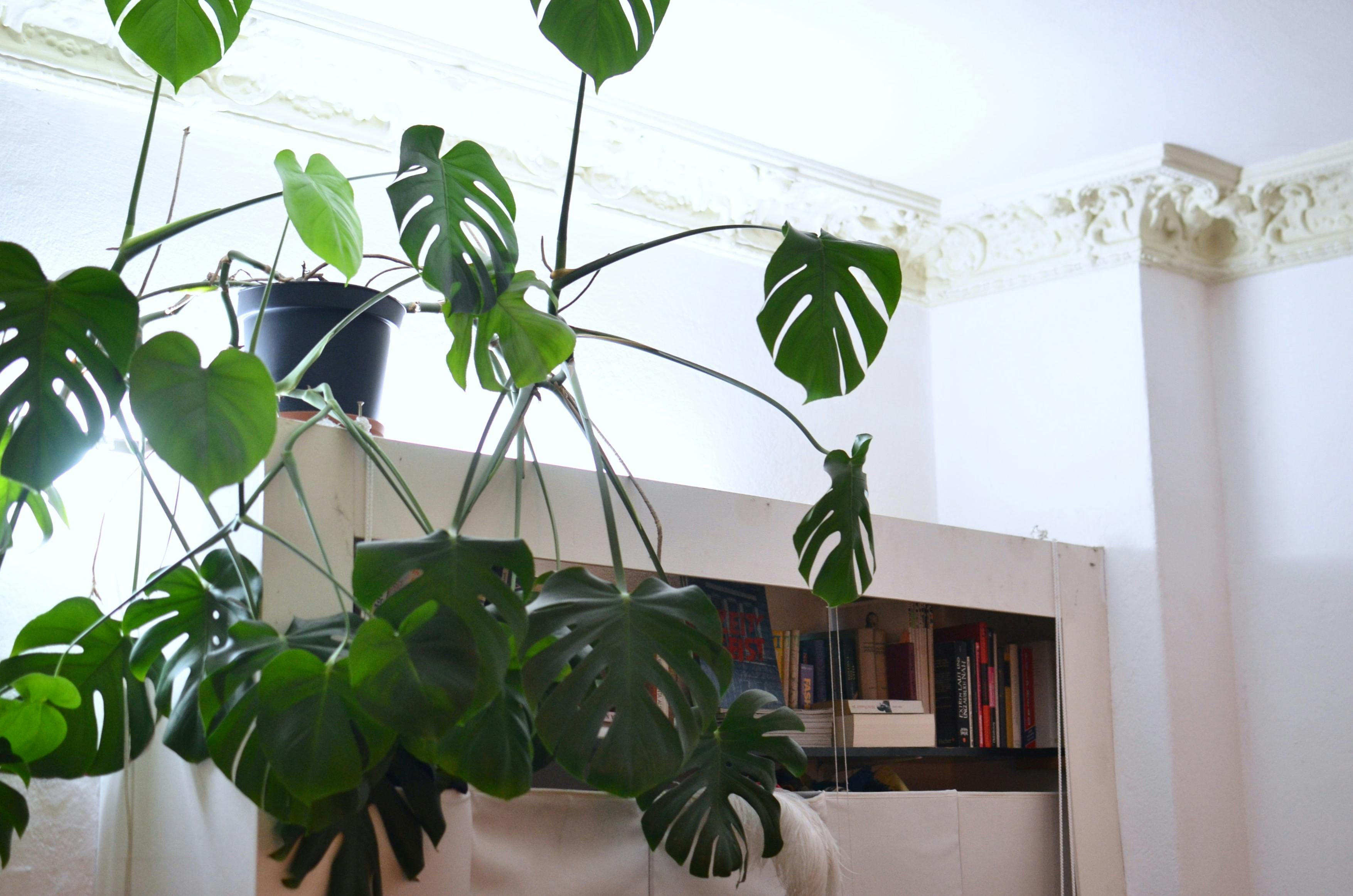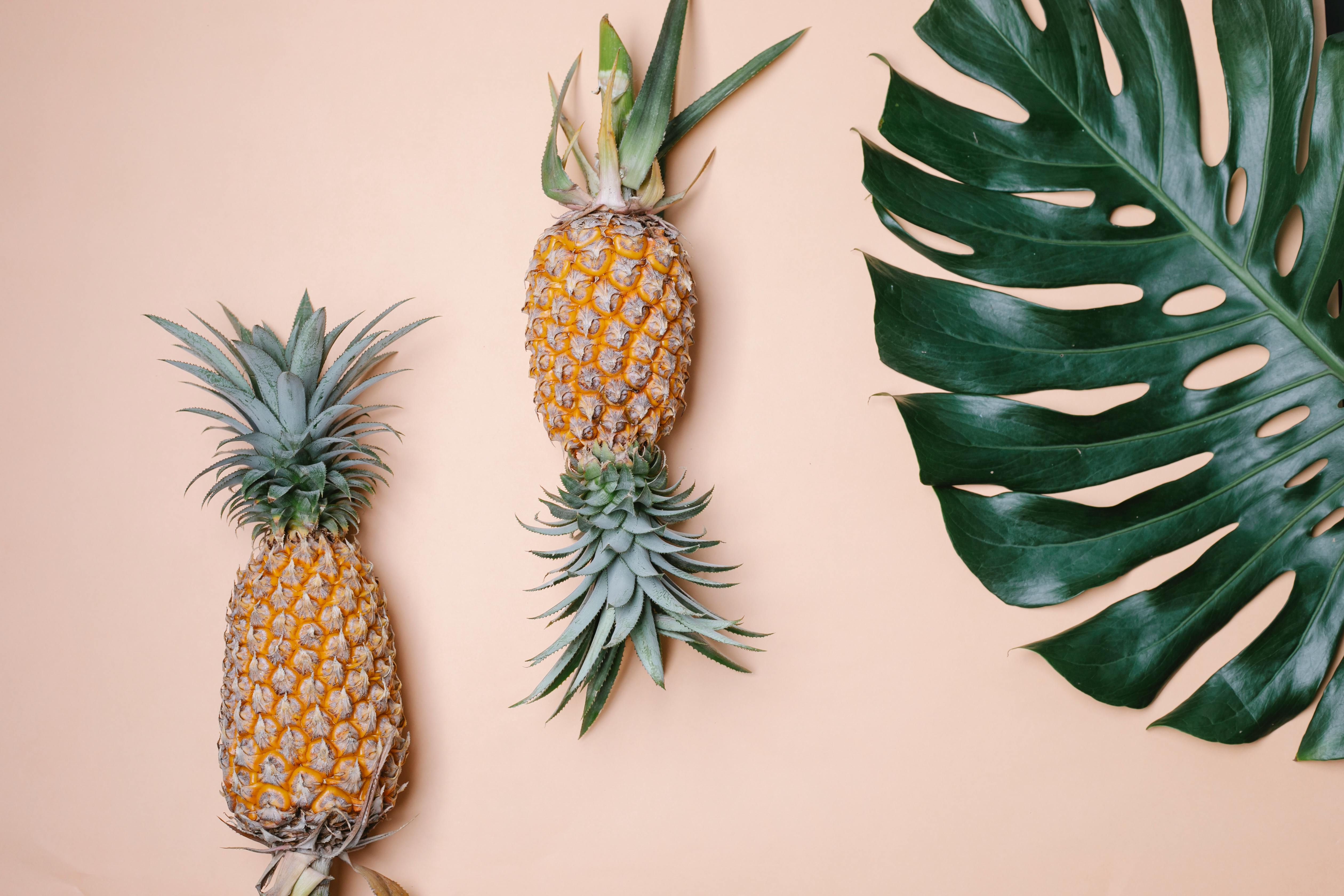Monstera deliciosa, commonly known as the Swiss Cheese Plant, is a popular houseplant that is well-known for its large, glossy green leaves that have unique split or perforated sections. In addition to being an attractive houseplant, Monstera deliciosa can also produce edible fruit in the right conditions. If you’d like to get your Monstera deliciosa to fruit, there are certain steps you can take to increase your chances of success. With a little patience and the right care instructions, you can get your Monstera deliciosa to produce delicious fruits.Monstera deliciosa is a species of evergreen vine native to tropical rainforests in Central and South America. It is easily identifiable by its large, heart-shaped leaves, which are perforated with holes. The stem of the plant is also covered in aerial roots, and its leaves can grow up to three feet wide. Monstera deliciosa is also known for its edible fruit, which has a sweet taste and a pineapple-like aroma. To identify Monstera deliciosa, look for its distinctive large, heart-shaped leaves with holes in them, as well as its aerial roots and sweet-smelling fruit.
Monstera Deliciosa Fruiting Requirements
Monstera deliciosa, also known as Swiss Cheese Plant, is a popular houseplant that is prized for its exotic foliage. Its white flowers are rarely seen in the home, but it is possible to get them to fruit if the environmental conditions are right. In order to get Monstera deliciosa to fruit, there needs to be bright indirect sunlight, high humidity levels, and regular watering.
For bright indirect sunlight, Monstera deliciosa should be placed near a south or east-facing window. It should receive at least 4-6 hours of sunlight a day but not more than 8-10 hours as this could cause the leaves to burn.
High humidity levels are also required for Monstera deliciosa to flower and produce fruit. The ideal relative humidity level should be between 60-80%. You can increase humidity levels by misting the leaves with water or using a humidifier.
Finally, Monstera deliciosa should be watered regularly in order to encourage flowering and fruiting. The soil should always be kept lightly moist but never soggy or dry. During the summer months, you may need to water your plant more often than during the winter months as it grows faster during this time of year.
By providing your Monstera deliciosa with all these environmental conditions, you should be able to get it to flower and produce delicious fruits!
What Fertilizer is Best Suited to Help Monstera Deliciosa Fruit?
Fertilizing your Monstera Deliciosa is an important part of maintaining the health of the plant and helping it produce fruit. A balanced fertilizer with a high nitrogen content is recommended for optimal growth and fruit production. A 10-10-10 formula, or one with equal parts nitrogen, phosphorus, and potassium is ideal. The fertilizer should be applied every two weeks during the growing season and then once a month during the winter months. Make sure to follow the instructions on the packaging to ensure proper application and dosing. Additionally, it is essential to keep in mind that too much fertilizer can burn the roots of your plant, so it is always important to be conservative with your application.
It can also be beneficial to supplement your plant’s diet with organic fertilizers such as compost or manure tea to provide additional nutrients. These natural sources of nutrients are often more readily available for the plant to use than synthetic fertilizers. They can also help improve soil structure and microbial life in the soil which will benefit overall plant health. As an added bonus, these natural fertilizers are generally more eco-friendly than their synthetic counterparts.
Ultimately, choosing the best fertilizer for your Monstera Deliciosa will depend on its individual needs and preferences as well as environmental conditions. With that said, a balanced 10-10-10 fertilizer combined with occasional doses of organic amendments should help ensure that your Monstera Deliciosa produces plenty of delicious fruits!
How Much Sunlight Does Monstera Deliciosa Need to Fruit?
Monstera deliciosa is a tropical, evergreen climbing plant native to Central America. It’s known for its large, heart-shaped leaves and its edible fruit. But how much sunlight does this plant need in order to produce fruit?
The amount of sunlight Monstera deliciosa needs to produce fruit can vary depending on the climate and growing conditions. If you are growing your plant indoors, it will need bright, indirect sunlight for at least six hours a day. In an outdoor setting, the plant should be planted in a spot that receives partial shade for most of the day.
In areas with intense sun and heat, such as in desert climates, Monstera deliciosa will need more protection from direct sunlight than it would in cooler climates. In these regions, the plant should be placed in a spot that receives partial shade during the hottest part of the day.
Adequate water is also important for producing edible fruit with Monstera deliciosa plants. The soil should be kept moist but not soggy and the roots should not be allowed to sit in standing water. Applying a layer of mulch around the base of the plant can help keep moisture in and control weeds that may compete with your plant for nutrients and sunlight.
Finally, Monstera deliciosa plants need plenty of nutrients to grow healthy and produce fruit. A balanced fertilizer applied every two weeks during active growth periods can help ensure that your plant has access to all of the essential nutrients it needs to thrive and bear fruit.
In summary, Monstera deliciosa needs bright indirect light for at least six hours a day, protection from intense sun and heat if necessary, adequate water without soil saturation, and regular fertilization in order to bear edible fruit.
When is the Best Time of Year to Get Monstera Deliciosa to Fruit?
Monstera deliciosa, also known as Swiss cheese plant, is a popular houseplant that can fruit in the right conditions. If you want your Monstera deliciosa to bear fruit, knowing when is the best time of year to get it is essential.
Fruiting season for Monsteras generally runs from late summer to early winter and varies depending on your location. Generally speaking, you’ll want to look for fruits in late August through October if you live in the Northern Hemisphere or March through May in the Southern Hemisphere.
During fruiting season, your Monstera will produce a flower spike that will eventually turn into clusters of yellow or orange berries. You’ll need to give it plenty of bright light and a well-draining soil mix, but as long as you do that, there’s no reason why it won’t fruit.
In addition to the right light and soil mix, you’ll also need some patience when trying to get your Monstera deliciosa to fruit. It can take up to two years before your plant starts bearing fruits so don’t expect results overnight!
If you want your Monstera deliciosa to bear fruit, make sure you give it plenty of bright light and a well-draining soil mix during fruiting season. Patience is key as it can take up two years before your plant starts producing fruits so don’t be discouraged if it takes time!

Pests
Monstera deliciosa is susceptible to a range of pests, including aphids, mealybugs, scale insects, and spider mites. These pests can damage the plant’s foliage and reduce its ability to fruit. To control these pests, it is important to keep the plant clean and free of dust and debris. Regularly inspect the leaves for signs of infestation and remove any affected leaves immediately. Natural predators such as ladybugs can also help keep pest populations in check.
Diseases
Monstera deliciosa is also susceptible to several fungal and bacterial diseases that can affect its ability to fruit. Common diseases include root rot, leaf spot, powdery mildew, and blight. To prevent these diseases from occurring, it is important to practice good sanitation. Make sure the soil is well-draining and avoid overwatering or waterlogging the soil. If any signs of disease are detected, treat the plant immediately with a fungicide or bactericide approved for use on edible plants.
How Much Water Does Monstera Deliciosa Need for Fruiting?
Monstera deliciosa is a popular houseplant that is prized for its large, heart-shaped leaves and beautiful yellow-green fruit. Despite its delicate appearance, Monstera deliciosa is actually quite hardy and can be grown in a variety of environments. To ensure proper fruiting, however, Monstera deliciosa requires adequate water.
When it comes to watering your Monstera deliciosa for fruiting, it’s important to understand the plant’s needs. In general, Monstera deliciosa likes soil that is consistently moist but not soggy. To achieve the right balance of moisture, water your plant thoroughly once a week during the growing season (spring through summer). In winter, you can reduce watering to every 10-14 days depending on the climate and level of humidity in your home.
When it comes to watering techniques, always water at soil level instead of from above so as not to encourage fungal growth on the plant’s leaves. You may also consider using rainwater or distilled water if you live in an area with hard water or high levels of chlorine. Additionally, make sure you check the soil before each watering session by sticking a finger into the top few inches of soil to determine if it’s dry or wet.
Overall, providing your Monstera deliciosa with enough water is essential for successful fruiting. With consistent watering and proper care, you can enjoy beautiful yellow-green fruit from your Monstera deliciosa for years to come!
Maximizing Fruiting Potential
Growing fruit-bearing trees can be a rewarding experience, but it takes some effort to ensure the trees reach their full fruiting potential. There are several care tips that should be followed to maximize fruiting potential including proper pruning, fertilization, and pest control.
Pruning
Proper pruning is key for maintaining a healthy and productive tree. Pruning helps ensure that the tree receives enough sunlight and air circulation, and helps shape the tree so that it can better support its own weight. Pruning should be done in early spring before any new growth has emerged. It is important to avoid over-pruning, as this can reduce the number of fruits produced and weaken the overall health of the tree.
Fertilization
Fertilizing your fruit trees with a balanced fertilizer will help keep them healthy and will promote increased fruit production. The type of fertilizer you use will depend on your soil type and the age of your tree. Generally, applying a balanced fertilizer two or three times a year is recommended in order to provide your trees with all the nutrients they need to produce healthy fruits.
Pest Control
Pest control is also an important factor in maximizing fruiting potential. Properly identifying pests and using an appropriate treatment can help protect your trees from damage caused by insects or disease-causing organisms. Treatments should be applied at regular intervals throughout the growing season in order to keep pests at bay and promote overall health of the tree.

Conclusion
Fruiting a Monstera deliciosa is a rewarding and enjoyable experience that requires patience and dedication. It takes time for a Monstera to reach maturity, and this process will vary from plant to plant. With the right environment, plenty of sunlight, and the proper care, you can get your Monstera deliciosa to fruit.
Providing the best possible conditions for your Monstera deliciosa is key to getting it to fruit. Ensure that you are providing ample light and water while also avoiding overwatering and underwatering. A good fertilizer regimen should also be incorporated into the care schedule of your plant.
In conclusion, if you take the time to provide the correct environment for your Monstera deliciosa, you can be rewarded with delicious fruits! With a little bit of patience and dedication, you can enjoy delicious fruits right in your home or garden!



